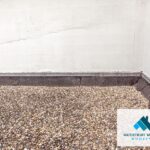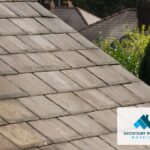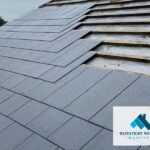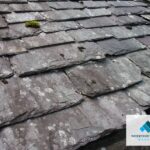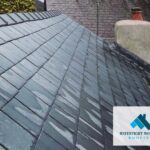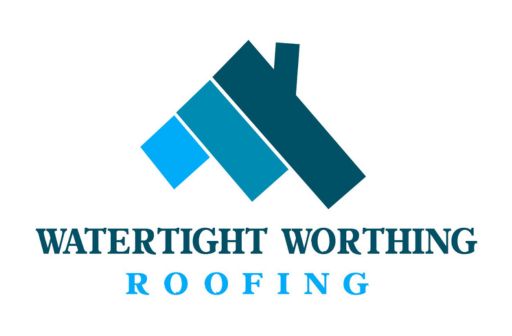Ready to elevate your home to new heights? Look no further than our expert tips for a perfectly crafted pitched roof installation in the UK. Like an artist wielding a brush, you have the power to transform your humble abode into a masterpiece.
With the right materials, techniques, and processes at your disposal, the sky’s the limit. We will guide you through every step of the way. From selecting the perfect materials that fit your style and budget to understanding the intricate roofing techniques and processes, we will cover it all.
Proper ventilation and insulation are essential for a comfortable living environment, and we’ll show you how to achieve both. Whether you choose to hire a reliable roofer or take on this challenge yourself, we have insights tailored for you.
And once your pitched roof is complete, don’t worry – we won’t leave you hanging! Our maintenance tips will help ensure your creation stands strong over time.
Get ready to liberate yourself from ordinary roofs – let’s start crafting perfection now!
Selecting the Right Materials for Your Roof
When it comes to selecting the right materials for your roof, you’ll want to make sure you’re picking ones that safeguard your home and give it that extra touch of style.
The initial step in roofing materials selection is figuring out what type of material is most appropriate for your specific needs. Think about factors such as durability, aesthetics, and maintenance requirements.
Asphalt shingles are a popular choice because of their cost-effectiveness and flexibility. They come in various colors and designs, allowing you to customize the look of your roof.
Metal roofing provides exceptional longevity and resistance against extreme weather conditions but could be pricier initially.
Tile roofs deliver a timeless appeal but could be more costly and need regular inspection for cracks or damage.
In the end, weigh the roofing material costs against their advantages to make an informed decision that meets both practicality and style requirements for your ideal roof installation.
Understanding the Roofing Techniques and Processes
To guarantee a successful roofing job, you must correctly measure and compute the sizes of your roof. This involves precisely ascertaining the length, width, and height of your roof to figure out the quantity of materials required.
Once you have the measurements, it’s essential to ready the roof surface. This includes removing any old roofing material, cleaning any rubbish, and repairing any broken areas.
Additionally, installing underlayment and flashing is essential. These provide an extra layer of protection against water infiltration and guarantee a watertight seal.
Properly Measuring and Calculating Roof Dimensions
Gauging and calculating roof dimensions is akin to an art form, where precise measurements come together to create the ideal pitch. To ensure a seamlessly crafted pitched roof, follow these key steps:
- Use advanced roof measurement technology: Leverage the power of aerial imaging or satellite measurement tools for precise readings. These tactics eliminate human error and supply comprehensive data.
- Gauge all areas of the roof: Do not leave out any sections when taking measurements. Include overhangs, eaves, ridges, valleys, and any projections in your figures.
- Calculate roofing materials accurately: Figure out the needed quantity of shingles, underlayment, flashing, and nails based on your readings. Overestimating consumes resources while underestimating leads to delays and extra costs.
By mastering these techniques and computations with care, you’ll free yourself from potential errors and guarantee a perfectly crafted pitched roof installation that will endure the test of time.
Preparing the Roof Surface for Installation
Preparing the roof surface requires inspecting and cleaning thoroughly for a primed base for the upcoming installation. Examine the entire roof for any signs of damage or wear that may need repair before continuing. Utilize a broom or leaf blower to clear away debris, such as leaves, branches, and dirt. This step is essential in creating a clean surface for the roofing materials to adhere properly.
Select the appropriate roofing materials for your project requirements. Think about factors like durability, weather resistance, and aesthetic appeal when choosing. Make sure the asphalt shingles, metal panels, or tiles are of high quality and able to withstand the elements properly.
Preparing the roof surface and selecting the right roofing materials carefully will ensure a well-constructed roof that will be strong for years to come.
Installing Underlayment and Flashing
Ensure you have a solid foundation for your roof by installing underlayment and flashing properly. Crafting a perfect roof requires knowledge of proper flashing methods and avoiding common underlayment errors. Here are four important points to keep in mind:
- Seal every penetration point: Spend the time sealing all places where elements may get through, such as chimneys or vents, with superior quality flashing materials. This guarantees maximum protection from leaks.
- Use relevant underlayment material: Choose an underlayment that fits your climate and roofing material. For instance, in colder climates, consider using ice and water shield underlayment to prevent ice damming.
- Overlap correctly: When laying down the underlayment, make sure each layer overlaps as per manufacturer instructions. Incorrect overlap can reduce its effectiveness in stopping moisture penetration.
- Avoid wrinkles and gaps: Smooth out any wrinkles or creases in the underlayment while installing as they can create weak spots for water infiltration.
By following these tips on understanding flashing techniques and avoiding common underlayment mistakes, you can establish a sturdy roof that will provide enduring protection for your home.
Ensuring Proper Ventilation and Insulation
To ensure proper ventilation and insulation in your roofing system, it’s essential to understand the importance of preventing moisture accumulation. Good ventilation helps control humidity, reducing condensation and the risk of mold and rot. When selecting insulation, choose materials with high thermal resistance for improved energy efficiency and reduced heat loss.
Make sure to install vents and insulation accurately, creating a tight seal to avoid air leakage and maintain ideal temperature control inside your home.
Importance of Ventilation for Preventing Moisture Build-Up
Ensure your roof has sufficient air circulation to avoid the costly moisture build-up that can damage your home. Preventing condensation is essential to maintaining a healthy roofing system. Here’s why proper ventilation is vital:
- Stops Moisture Build-Up: Enough ventilation allows for the dispersal of extra moisture, hindering condensation from occurring in your attic or crawl space.
- Maintains Structural Integrity: By reducing humidity levels, you avert rot and decay in wooden components, sustaining the overall structural stability of your roof.
- Shields Insulation: Adequate airflow stops insulation from becoming moist or soaked, guaranteeing its capability in controlling temperature and cutting back energy consumption.
- Halts Mold Growth: Moisture buildup produces an ideal atmosphere for mold growth. Proper ventilation aids in controlling moisture levels, decreasing the risk of mold contamination.
By making ventilation a priority, you can protect your home from the destructive effects of excessive moisture and enjoy a well-crafted and long-lasting roof.
Choosing the Right Insulation for Energy Efficiency
Understanding the significance of ventilation to avoid moisture build-up is important for pitched roofing installation. The next crucial step is to select the correct insulation for energy efficiency.
There are multiple options available that can help in saving energy in your home. The selection of insulation material depends on factors such as budget, environmental effect, and desired level of thermal performance. Commonly used options are fiberglass batts, cellulose fiber, spray foam, and rigid foam boards. Each type has its own R-value (thermal resistance), fire resistance, moisture control abilities, and installation ease.
By picking the right insulation material and making sure proper installation techniques are followed, you can build an energy-efficient barrier which minimizes heat loss or gain through your roof while decreasing your carbon footprint and utility bills.
Installing Vents and Insulation Properly
Understand the importance of proper vent installation and insulation to protect against moisture build-up and ensure energy efficiency in your home, but do you know how to install them accurately? Here are three key steps for sealing and avoiding leaks:
- Begin by ensuring that all vents are installed correctly and securely. Improperly installed vents can lead to air leakage, compromising the performance of your insulation.
- Then, make sure that all gaps and cracks around the vents are sealed firmly. This will stop any air from escaping or entering through these openings.
- Lastly, pay attention to proper insulation placement. Insulating material should be evenly spread out throughout the attic space, avoiding any gaps or voids that could enable heat loss or moisture buildup.
By following these steps, you can guarantee that your vents and insulation are installed properly, maximizing energy efficiency and averting any potential problems with leaks or moisture buildup.
Hiring a Professional Roofer or DIY Installation
Hiring a professional roofer can lead to a perfectly crafted roof which adds value and improves the look of your home. When it comes to pitched roofing installation, it’s essential to consider the expertise and experience that professionals provide. They possess the knowledge and abilities to guarantee proper installation, guaranteeing durability and defense against inclement weather.
One key benefit of hiring a professional roofer is their capacity to evaluate your particular roofing requirements accurately. They’ll suggest appropriate materials, taking into consideration factors such as climate, incline, and budget limitations. Additionally, professionals come with specialized tools and equipment essential for an efficient and precise installation process.
Although DIY installation may seem like a cost-effective option, it often results in costly mistakes or inadequate workmanship. Professionals comprehend the intricacies of pitched roofing systems and can recognize potential issues before they become major problems.
By entrusting your pitched roofing installation to qualified professionals, you can experience peace of mind knowing that your roof will be skillfully crafted for years of dependable performance.
Maintaining and Caring for Your Pitched Roof
Taking care of your pitched roof is similar to tending to a blooming garden – regular maintenance guarantees its longevity and guards against potential damage. Here are some key tips to help you maintain and care for your pitched roof:
- Keep the roof spotless: Regularly remove leaves, debris, and moss from the roof surface as they can hold moisture and cause decay.
- Check for leaks: Look over your roof routinely for any signs of leaks, such as water stains or wetness on the ceiling. Immediately mend any broken or missing shingles to stop water from seeping in.
- Trim overhanging branches: Cut back any trees or branches that hang over your roof to stop them from scratching or damaging the roofing materials during strong winds.
- Book professional inspections: It’s wise to have a professional roofer look over your pitched roof yearly or after serious weather events to detect potential issues early.
By following these maintenance practices, you can guarantee a clean and leak-free pitched roof, extending its lifespan and defending your home from expensive damages.
Frequently Asked Questions
Can I use any type of material for a pitched roof, or are there specific materials that are recommended?
For a pitched roof, it’s essential to pick materials that offer durability and protection. Certain materials are suggested for this kind of roof. Popular choices include slate, clay tiles, and metal roofing. These materials have great resistance to weather conditions and can last for many years.
When selecting the best material for your pitched roof, factors such as local climate, budget, and aesthetic preferences should be taken into account.
What are some common challenges or issues that can arise during the installation process of a pitched roof?
During pitched roof installation, common challenges that require troubleshooting may arise. Ensuring proper alignment of the roof components to avoid leaks and structural issues is an issue that could occur. Uneven surfaces or existing damage can be problematic and require additional repairs or adjustments. To ensure a durable and flawless roof, it’s vital to inspect the site before beginning installation and use appropriate techniques and materials.
Here are some tips for troubleshooting pitched roof installation:
How can I determine the appropriate amount of ventilation and insulation needed for my pitched roof?
To determine the right amount of ventilation for your pitched roof, there are important considerations to keep in mind. Factors such as roof size and type, climate conditions, and local regulations are key.
Proper ventilation helps prevent moisture buildup and encourages air flow, extending the life of your roof.
When it comes to insulation requirements, factors including R-value, thickness, and material need to be taken into account for maximum energy efficiency and comfort in your home.
What are the advantages of hiring a professional roofer for the installation of a pitched roof, as opposed to doing it myself?
Hiring a professional roofer for your pitched roof installation offers numerous benefits.
Haste can lead to undesirable results, and attempting this complex task yourself could incur considerable costs.
Thanks to their expertise, roofers guarantee precise construction, using the right methods and materials for a sturdy and enduring roof.
Although the cost of hiring a roofer may seem high initially, it is nothing compared to the potential expenses of fixing mistakes or dealing with future repairs.
Entrusting professionals alleviates your worries and certifies a perfectly crafted roof.
Are there any specific maintenance tasks or care instructions that I should follow to ensure the longevity and durability of my pitched roof?
To ensure the longevity and durability of your pitched roof, there are several maintenance tasks and care instructions you should follow.
Inspect your roof regularly for any signs of damage or wear, such as cracked tiles or loose flashing.
Keep gutters clear to avoid water buildup.
Apply a protective coating every few years to improve the roof’s resistance to weathering.
Use materials that are suitable for pitched roofs, such as high-quality tiles or slates, to maximize its lifespan and performance.
We want to take the time to thank you for reading our article, please consider checking out our roofing services below:


